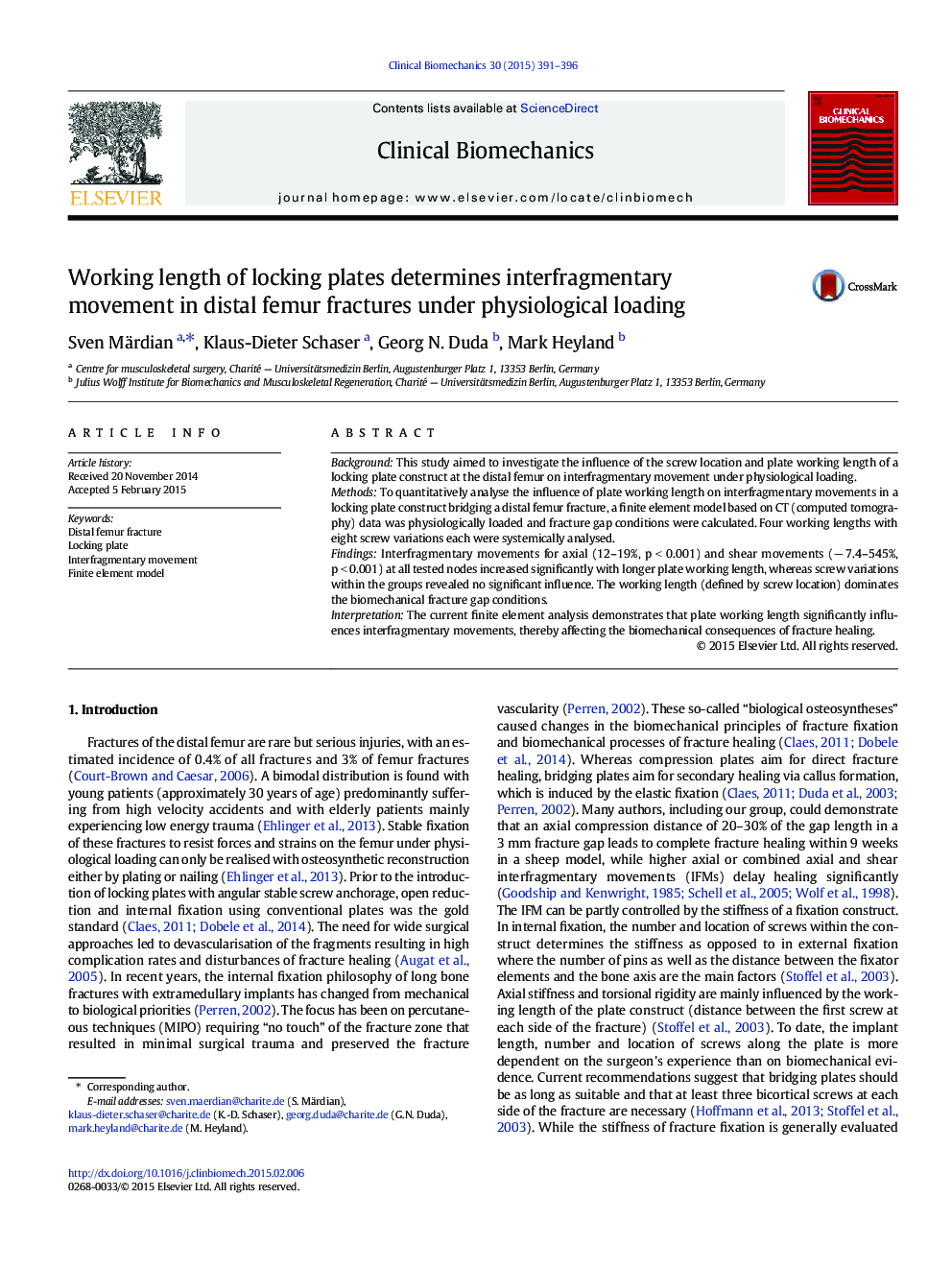| Article ID | Journal | Published Year | Pages | File Type |
|---|---|---|---|---|
| 6204754 | Clinical Biomechanics | 2015 | 6 Pages |
â¢Significant influence of interfragmentary movements by the working lengthâ¢No significant influence of screw variance within the working length groupsâ¢Asymmetric gap closure mostly in medio-lateral planeâ¢Shear increases disproportionally as opposed to axial movement.
BackgroundThis study aimed to investigate the influence of the screw location and plate working length of a locking plate construct at the distal femur on interfragmentary movement under physiological loading.MethodsTo quantitatively analyse the influence of plate working length on interfragmentary movements in a locking plate construct bridging a distal femur fracture, a finite element model based on CT (computed tomography) data was physiologically loaded and fracture gap conditions were calculated. Four working lengths with eight screw variations each were systemically analysed.FindingsInterfragmentary movements for axial (12-19%, p < 0.001) and shear movements (â 7.4-545%, p < 0.001) at all tested nodes increased significantly with longer plate working length, whereas screw variations within the groups revealed no significant influence. The working length (defined by screw location) dominates the biomechanical fracture gap conditions.InterpretationThe current finite element analysis demonstrates that plate working length significantly influences interfragmentary movements, thereby affecting the biomechanical consequences of fracture healing.
